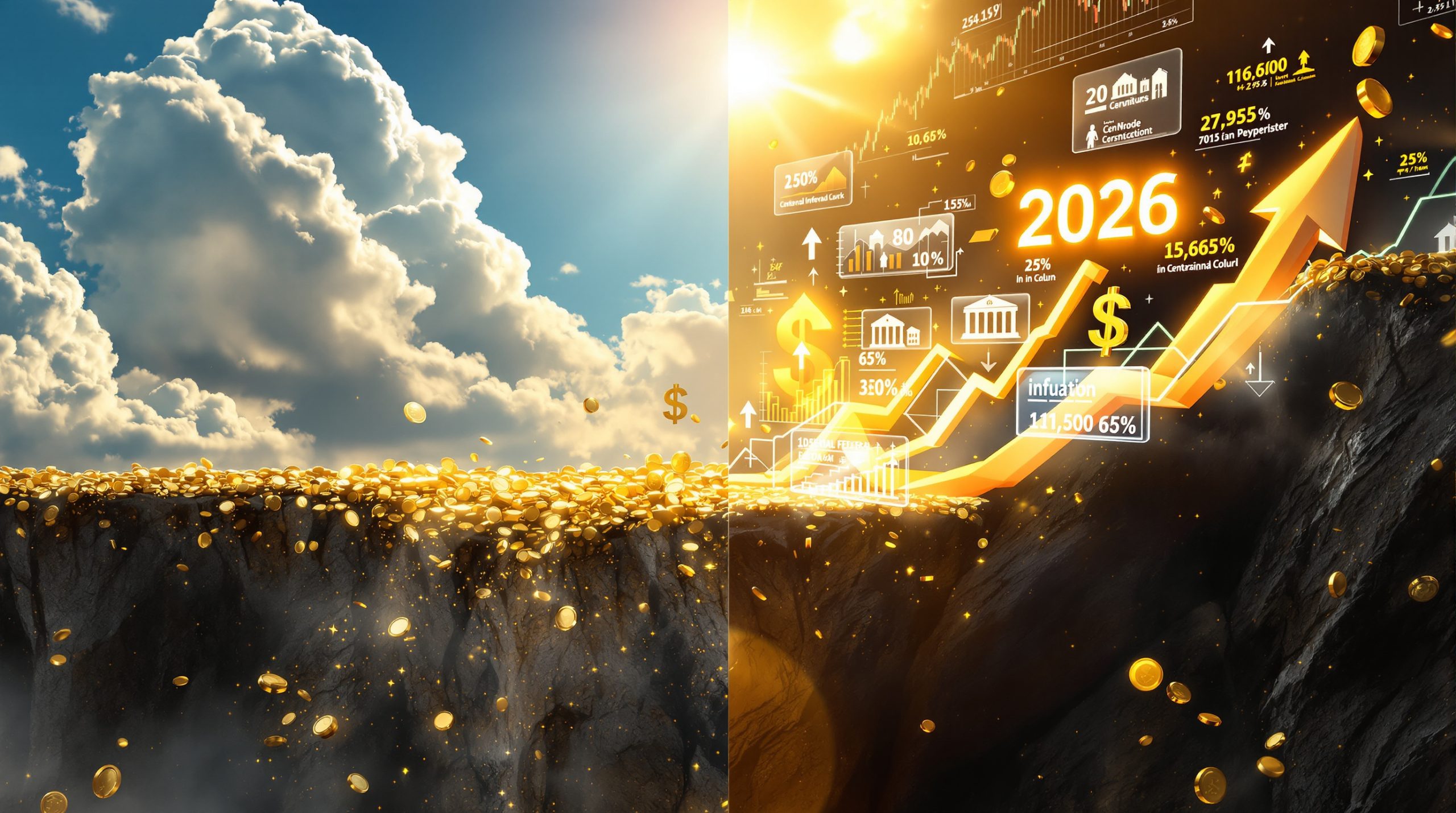What Makes Gold and Silver Valuable Investments?
Gold and silver have served as stores of value for thousands of years, maintaining their worth through economic cycles, inflation, and market volatility. These precious metals offer unique benefits that traditional investments like stocks and bonds cannot match, particularly during economic uncertainty.
Unlike fiat currencies that can be created indefinitely, precious metals exist in limited supply. Gold's global reserves are estimated at just 208,874 metric tons—a tiny fraction compared to the world's money supply—while annual silver production hovers around 24,500 metric tons. This scarcity underpins their enduring value proposition.
The Enduring Value Proposition of Precious Metals
Precious metals derive their value from several fundamental characteristics:
Scarcity: Unlike fiat currencies that can be printed indefinitely, gold and silver exist in finite quantities with annual mining production adding just 1-2% to existing supplies.
Durability: These metals don't corrode or degrade over time, allowing them to maintain their value for generations.
Fungibility: One ounce of pure gold is identical to another, making them easily tradable across borders and cultures.
Divisibility: They can be divided into smaller units without losing value, providing flexibility for transactions of any size.
Universal recognition: Accepted globally as valuable regardless of political systems or economic conditions.
These intrinsic properties have made precious metals reliable safe haven assets across civilizations and centuries. As former Federal Reserve Chairman Alan Greenspan noted, "Gold still represents the ultimate form of payment in the world."
How Do Gold and Silver Perform During Economic Uncertainty?
During periods of market stress, precious metals often demonstrate negative correlation with traditional financial assets, making them valuable portfolio diversifiers.
Gold as a Crisis Hedge
Gold typically demonstrates inverse correlation with traditional markets during periods of economic stress. When examining historical data:
| Economic Crisis | S&P 500 Performance | Gold Performance |
|---|---|---|
| 2008 Financial Crisis | -38.5% | +5.8% |
| COVID-19 Crash (2020) | -34% (at lowest) | +25% (annual) |
| Dot-com Bubble (2000-2002) | -49% | +12.8% |
This counter-cyclical performance makes gold particularly valuable during market downturns and currency devaluation periods. In fact, gold's performance during crisis periods has earned it the nickname "financial fire insurance."
Silver's Dual Role
Silver exhibits characteristics of both a precious metal and an industrial commodity, creating a unique investment profile:
- During economic expansion: Industrial demand supports prices
- During economic contraction: Monetary properties provide support
- Historical gold-to-silver ratio fluctuations create tactical opportunities
Silver's industrial applications continue expanding into sectors like renewable energy (photovoltaic cells), electronics, medical applications, and water purification technologies. This growing industrial demand creates a potential price floor while still allowing silver to respond to monetary stimulus like gold.
What Are the Different Ways to Invest in Precious Metals?
Investors can access gold and silver through multiple vehicles, each with distinct advantages and considerations.
Physical Ownership Options
Bullion Coins and Bars
- Provides direct ownership without counterparty risk
- Available in various weights and purities (typically 99.9% for gold, 99.9% for silver)
- Requires secure storage solutions
- May carry premiums over spot price, especially for smaller denominations
In 2023, premiums on physical metals reached historic lows, with many products available at just 1-2% over spot prices—the lowest seen in more than 50 years. This premium compression offers unusual value for physical buyers.
Numismatic and Semi-Numismatic Coins
- Collectible coins with potential additional value beyond metal content
- May include historical coins like pre-1964 U.S. silver coins ("junk silver")
- Can carry significant premiums based on rarity, condition, and collector demand
- Requires specialized knowledge for optimal purchasing decisions
Paper Gold and Silver Investments
Exchange-Traded Funds (ETFs)
- Provides exposure to metal prices without physical storage concerns
- Highly liquid with low transaction costs
- Examples include GLD, SLV, PHYS, and PSLV
- May involve counterparty risk depending on fund structure
Mining Stocks
- Offers leveraged exposure to metal prices
- Provides potential dividend income
- Introduces company-specific operational risks
- Categories include major producers (Newmont, Barrick), mid-tier producers, and junior explorers
For those new to the sector, consulting a comprehensive mining stocks guide can provide valuable insights on evaluation criteria and risk management.
Futures and Options
- Allows for leveraged positions and hedging strategies
- Requires specialized knowledge and higher risk tolerance
- Not suitable for most retail investors seeking simple precious metals exposure
Why Do Central Banks Continue Accumulating Gold?
Central banks have significantly increased their gold reserves in recent years, with annual purchases exceeding 1,000 tons annually since 2022—more than double the historical average of approximately 500 tons.
This institutional buying represents about 31% of annual mine production, creating significant supply pressure independent of retail investor demand. China alone added over 225 tons to its reserves in recent years.
Strategic Diversification Away from Dollar Assets
Non-G7 central banks particularly have accelerated gold purchases, potentially indicating:
- Reduced confidence in U.S. Treasury securities amid growing fiscal challenges
- Desire to minimize exposure to geopolitical sanctions risk
- Strategic hedging against currency devaluation
- Preparation for potential monetary system restructuring
As one central banker anonymously stated, "Gold represents a hedge against the systematic risks that are building in the global financial architecture."
Impact on Gold Price Dynamics
The central bank buying trend has fundamentally altered gold market analysis dynamics:
- Price strength has occurred despite minimal Western retail investor participation
- Institutional investors and pension funds remain significantly underallocated
- Price support exists at progressively higher levels due to consistent central bank accumulation
- Potential for amplified price movement when retail and institutional investors increase participation
This institutional accumulation creates a uniquely favorable dynamic for gold prices—central banks are absorbing nearly one-third of annual production regardless of price fluctuations.
How Do Market Cycles Affect Precious Metals Investments?
Understanding market psychology helps investors navigate the cyclical nature of precious metals markets and make strategic decisions.
Recognizing Bull and Bear Market Phases
Precious metals markets move through distinct cyclical phases:
Early Bull Market Phase
- Smart money accumulation by contrarian investors
- Limited public awareness or interest
- Gradual price appreciation with frequent pullbacks
- Negative sentiment from mainstream financial media
Middle Bull Market Phase
- Institutional investor participation increases
- Technical breakouts attract momentum traders
- Mining equities begin outperforming physical metals
- Mainstream recognition begins
Late Bull Market Phase
- Public participation accelerates with emotional buying
- Media coverage becomes overwhelmingly positive
- Mining stocks significantly outperform physical metals
- Premium expansion on physical products amid supply constraints
- "This time is different" narratives proliferate
Bear Market Phase
- Public interest evaporates as prices decline
- Mining companies struggle with financing and profitability
- Physical premiums contract as demand diminishes
- Accumulation opportunities for counter-cyclical investors
Understanding these phases helps investors make strategic allocation decisions and avoid emotional reactions to market movements. As contrarian investor Rick Rule often notes, "The cure for low prices is low prices, and the cure for high prices is high prices."
What Role Should Mining Stocks Play in a Precious Metals Portfolio?
Mining equities offer leveraged exposure to metals prices but require careful selection and risk management.
Understanding Mining Stock Dynamics
Mining stocks offer leveraged exposure to metal prices but introduce additional considerations:
Operational Factors
- Production costs and efficiency (All-In Sustaining Costs or AISC)
- Reserve replacement and exploration success
- Management quality and capital allocation discipline
- Jurisdictional risk and regulatory environment
Financial Considerations
- Balance sheet strength and debt levels
- Free cash flow generation and margins
- Dividend policies and shareholder returns
- Merger and acquisition activity
Current Mining Sector Landscape
The mining sector has undergone significant transformation since previous bull markets:
- Management teams demonstrate improved capital allocation discipline
- Balance sheets are generally stronger with reduced debt levels
- Focus on operational efficiency and sustainable margins
- More conservative approach to mergers and acquisitions
Key Insight: Despite gold reaching record highs above $2,300 per ounce in 2023, many gold mining indices remain significantly below their 2011 peaks when gold was only $1,900 per ounce, potentially indicating substantial upside potential if historical patterns repeat.
This disconnect between metal prices and mining equities suggests a potential opportunity—companies are generating higher margins than in previous cycles but trading at lower multiples.
How Does Silver Compare to Gold as an Investment?
Silver offers different risk-reward characteristics than gold, with potentially higher upside during bull markets.
The Gold-to-Silver Ratio Analysis
The gold-to-silver ratio (the number of silver ounces needed to purchase one ounce of gold) provides valuable insights for investors:
| Time Period | Gold-to-Silver Ratio |
|---|---|
| Historical Average (100+ years) | Approximately 55:1 |
| Current Level (2023) | Approximately 85:1 |
| 2011 Bull Market Low | 31:1 |
| 1980 Bull Market Low | 16:1 |
This ratio has historically compressed during precious metals bull markets, potentially offering outperformance opportunities for silver investors. A reversion to even the historical average would imply significant silver outperformance relative to gold.
Silver Market Characteristics
Silver's market structure differs significantly from gold:
- Much smaller market capitalization (approximately 1/10 the size)
- Higher volatility and price sensitivity to capital flows
- Dual monetary and industrial demand drivers
- More pronounced supply constraints due to mining economics
These factors can create powerful price movements when investment demand increases, particularly given current industrial applications in renewable energy. The photovoltaic industry alone consumes approximately 15% of annual silver production, contributing to a potential silver market boom.
What Are the Premium Dynamics in Physical Precious Metals Markets?
Premium fluctuations offer insights into market sentiment and can present strategic buying opportunities.
Understanding Premiums Over Spot Price
Physical precious metals typically trade at premiums above the spot price, reflecting:
- Fabrication costs
- Distribution expenses
- Dealer margins
- Product-specific demand dynamics
These premiums fluctuate based on market conditions and product types:
Low Premium Products
- Large bars (1 kg gold, 1000 oz silver)
- Generic rounds
- Secondary market products
Higher Premium Products
- Government-minted coins (American Eagles, Canadian Maple Leafs)
- Limited edition products
- Smaller denominations
Current Premium Environment
The physical precious metals market currently shows distinctive premium characteristics:
- Historically low premiums across most product categories
- Minimal differentiation between normally premium-commanding products
- Abundant supply at wholesale level
- Limited retail demand creating buying opportunities
This environment contrasts sharply with previous periods of high demand (like 2020-2021) when premiums expanded significantly, with American Silver Eagles commanding 35-40% over spot prices during supply shortages.
How Should Investors Approach Precious Metals Allocation?
Strategic allocation and psychological preparation are key to successful gold and silver investments.
Strategic Portfolio Construction
Effective precious metals allocation requires thoughtful planning:
Determining Appropriate Allocation Size
- Conservative approach: 5-10% of investable assets
- Moderate approach: 10-20% of investable assets
- Aggressive approach: 20%+ of investable assets
Balancing Physical and Paper Exposure
- Core physical holdings for wealth preservation
- Mining stocks for growth and leverage
- ETFs for tactical positioning and liquidity
Dollar-Cost Averaging Strategy
- Regular purchases regardless of price movements
- Accumulation focus during price corrections
- Long-term ounce accumulation goal setting
Psychological Preparation
Successful precious metals investing requires managing emotional responses:
- Understanding the high volatility nature of the sector (20-30% corrections are normal)
- Developing conviction through historical and fundamental research
- Maintaining focus on long-term wealth preservation objectives
- Viewing price corrections as accumulation opportunities
Legendary commodity investor Jim Rogers advises: "Throughout history, the people who have accumulated precious metals through the tough times are the ones who have come out ahead financially."
What Are the Key Considerations for Physical Metal Storage?
Secure storage solutions are essential for physical precious metals investors.
Storage Options Analysis
Physical precious metals require secure storage solutions:
Home Storage
- Complete control and immediate access
- No ongoing storage fees
- Security and insurance challenges
- Practical for smaller holdings (under $50,000)
Bank Safe Deposit Boxes
- Moderate security improvement
- Limited insurance coverage
- Potential access restrictions during banking crises
- No direct bank liability for contents
Private Vaulting Services
- Professional security systems
- Full insurance coverage
- Segregated or allocated storage options
- Third-party verification and auditing
- Annual costs typically 0.5-1% of holdings value
International Storage
- Geographic diversification
- Potential sovereign risk mitigation
- Jurisdictional advantages
- Increased complexity and costs
Digital Ownership Programs
Modern technology has created new ownership models:
- Allocated ownership with professional storage
- Fractional ownership capabilities (starting at $25)
- Mobile app management and transactions
- Physical delivery options at specified thresholds
These programs combine the security benefits of professional storage with the convenience of digital transactions, potentially offering an optimal solution for many investors.
What Macroeconomic Factors Drive Precious Metals Prices?
Several interconnected factors influence precious metals performance across different time horizons.
Key Price Influencers
Several interconnected factors influence gold price trends:
Monetary Policy Environment
- Interest rate trajectories
- Central bank balance sheet policies
- Currency debasement concerns
- Yield curve dynamics
Fiscal Policy Considerations
- Government deficit spending levels
- Debt-to-GDP ratios (U.S. now exceeds 125%)
- Unfunded liability growth
- Sovereign debt sustainability
Financial System Stability
- Banking system health
- Derivatives market risk
- Counterparty risk concerns
- Liquidity conditions
Geopolitical Landscape
- International monetary system evolution
- Trade relationship restructuring
- Resource nationalism trends
- Sanctions and financial warfare
Understanding these factors helps investors contextualize price movements and maintain conviction during volatile periods. As the global debt bubble continues expanding, precious metals offer a historically reliable hedge against monetary experiments.
FAQ: Essential Questions About Gold and Silver Investing
How do storage costs affect long-term precious metals returns?
Storage costs vary significantly based on the solution chosen:
- Home storage: Minimal direct costs but potential security expenses
- Bank safe deposit boxes: Typically $50-$300 annually depending on size
- Private vaulting: Usually 0.5%-1% of asset value annually
- Digital ownership programs: Often 0.5%-0.75% annually with additional services
These costs should be factored into long-term return expectations, particularly for silver due to its lower value density. One metric ton of silver (worth approximately $800,000) requires significantly more storage space than one metric ton of gold (worth approximately $70 million).
Are numismatic coins better investments than bullion?
Numismatic (collectible) coins introduce additional factors beyond metal content:
- Advantages: Potential for premium appreciation, collector market demand, historical significance
- Disadvantages: Higher entry premiums, specialized knowledge requirements, less liquid markets, authentication concerns
Most financial advisors recommend building a core bullion position before considering numismatic additions, as bullion provides more direct exposure to metal price movements with lower premiums.
How do gold and silver IRAs work?
Precious metals IRAs allow tax-advantaged investment in physical metals:
- Require IRS-approved custodian and depository
- Limited to specific products meeting purity requirements (minimum 99.5% for gold, 99.9% for silver)
- Subject to same contribution limits as traditional IRAs
- Involve setup fees, storage costs, and custodial fees
These specialized retirement accounts provide tax benefits but typically involve higher costs than direct ownership. Many investors find the optimal approach is using conventional IRAs for mining stocks while holding physical metals outside retirement accounts.
What is the significance of the gold-to-silver ratio for investors?
The gold-to-silver ratio serves multiple functions:
- Historical mean reversion indicator
- Potential tactical allocation signal
- Relative value measurement tool
- Bull market progression marker
When the ratio is historically elevated (as currently at approximately 85:1), it may indicate relative undervaluation of silver, potentially offering strategic opportunities for investors willing to accept silver's
Ready to Stay Ahead of the Next Major Mineral Discovery?
Discover potentially transformative mining opportunities before they hit mainstream attention with Discovery Alert's proprietary Discovery IQ model, which delivers real-time alerts on significant ASX mineral discoveries. Visit our discoveries page to see how major mineral findings have historically generated substantial returns and begin your 30-day free trial today.




